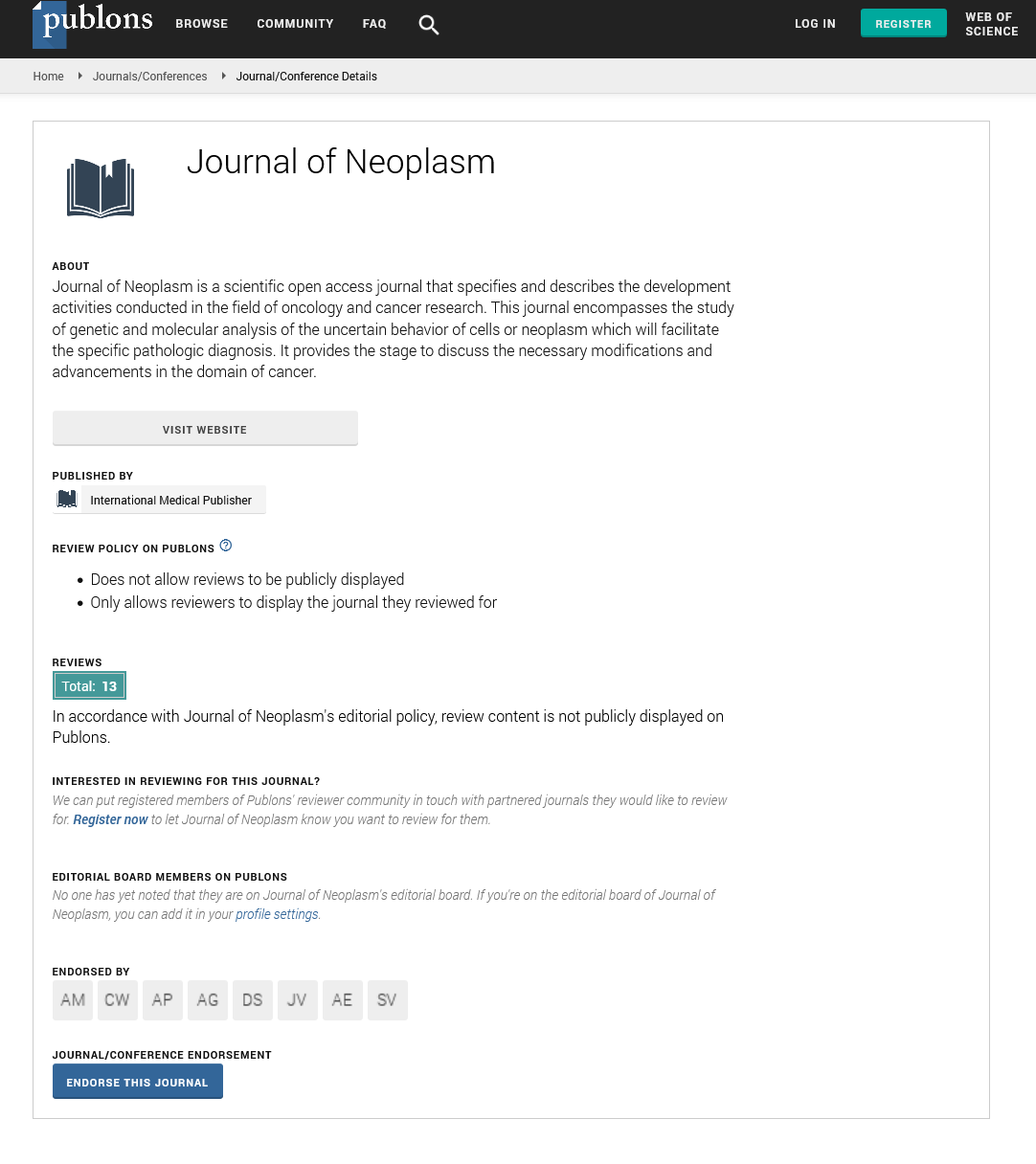Abstract
The Stage of Breast Cancer at the Time of Diagnosis: Correlation with the Clinicopathological Findings among Iraqi Patients
Background: Breast cancer is the most frequently diagnosed malignancy and the second leading cause of mortality among women in Iraq forming 23% of cancer related deaths. The low survival from the disease is a direct consequence to the advanced stages at diagnoses.
Aim: To document the composite stage of breast cancer among Iraqi patients at the time of diagnosis; correlating the observed findings with other clinical and pathological parameters at presentation.
Patients and Methods: A retrospective study enrolling the clinical and pathological characteristics of 603 Iraqi female patients diagnosed with breast cancer. The composite stage of breast cancer was determined according to UICC TNM Classification System of Breast Cancer and the American Joint Committee on Cancer Staging. The studied parameters comprised age of the patient, stage of the disease, marital and educational status, history of lactation and hormonal intake (for a minimum period of 6 months), family history of breast or any other cancer, the effected breast side, hormone (Estrogen and Progesterone) receptor (ER, PR) and Her2 contents of the primary cancer. Statistical analysis was performed to correlate the recorded composite stages at diagnosis with the corresponding clinical and pathological data utilizing SPSS version 16.0 statistical program.
Results: Out of 603 patients, seven (1.2%) had ductal carcinoma in situ (Stage 0). Stages I, II and III and IV were documented in 9.5%, 47.1%, 33.2% and 9.1% of the patients at the time of diagnoses. Overall 70.8% of patients presented in the age group (40-59 years), 79.3% were married and 32.2% were highly educated. History of lactation, hormonal intake, family breast cancer and contralateral breast involvement was observed in 73.4%, 26.5%, 20.2% and 6.5% respectively. No correlation was elicited between the stage of breast cancer and the age of the patients, history of lactation or contralateral breast involvement. On the other hand, significant associations were demonstrated with respect to the marital and educational status, history of hormonal intake and breast cancer in the family. Immuno-histochemical evaluation revealed ER+PR+Her2+ (Triple Positive/Luminal B), ER-PR-Her2- (Triple Negative), ER+PR+Her2- (Luminal A) and ER-PR-Her2+ (Her2) subtypes in 13.4%, 11.8%, 48.2% and 9.8% of the examined breast samples respectively. When correlating the composite stage at diagnosing breast cancer with the corresponding subtypes the relationship was highly significant at p<0.01.
Conclusions and Recommendations: The study reports a regression in Stage IV breast cancer at the time of initial presentation among Iraqi patients specifically in those with family history of the disease; pointing out to the fruitful outputs of initiating the National Program for Early Detection of Breast Cancer in the country. Further professional efforts, endorsed by practical policy decisions, are recommended to down stage breast cancer through promoting evidence based protocol guidelines and adopting comprehensive well designed diagnostic, screening and cancer control strategies.
Author(s):
Nada A.S. Alwan, Furat N Tawfeeq, Mina H. Maallah, Safana A. Sattar and Wieeam A Saleh
Abstract | Full-Text | PDF
Share this

Google scholar citation report
Citations : 144
Journal of Neoplasm received 144 citations as per google scholar report
Journal of Neoplasm peer review process verified at publons
Abstracted/Indexed in
- Google Scholar
- China National Knowledge Infrastructure (CNKI)
- Publons
- Secret Search Engine Labs
Open Access Journals
- Aquaculture & Veterinary Science
- Chemistry & Chemical Sciences
- Clinical Sciences
- Engineering
- General Science
- Genetics & Molecular Biology
- Health Care & Nursing
- Immunology & Microbiology
- Materials Science
- Mathematics & Physics
- Medical Sciences
- Neurology & Psychiatry
- Oncology & Cancer Science
- Pharmaceutical Sciences


